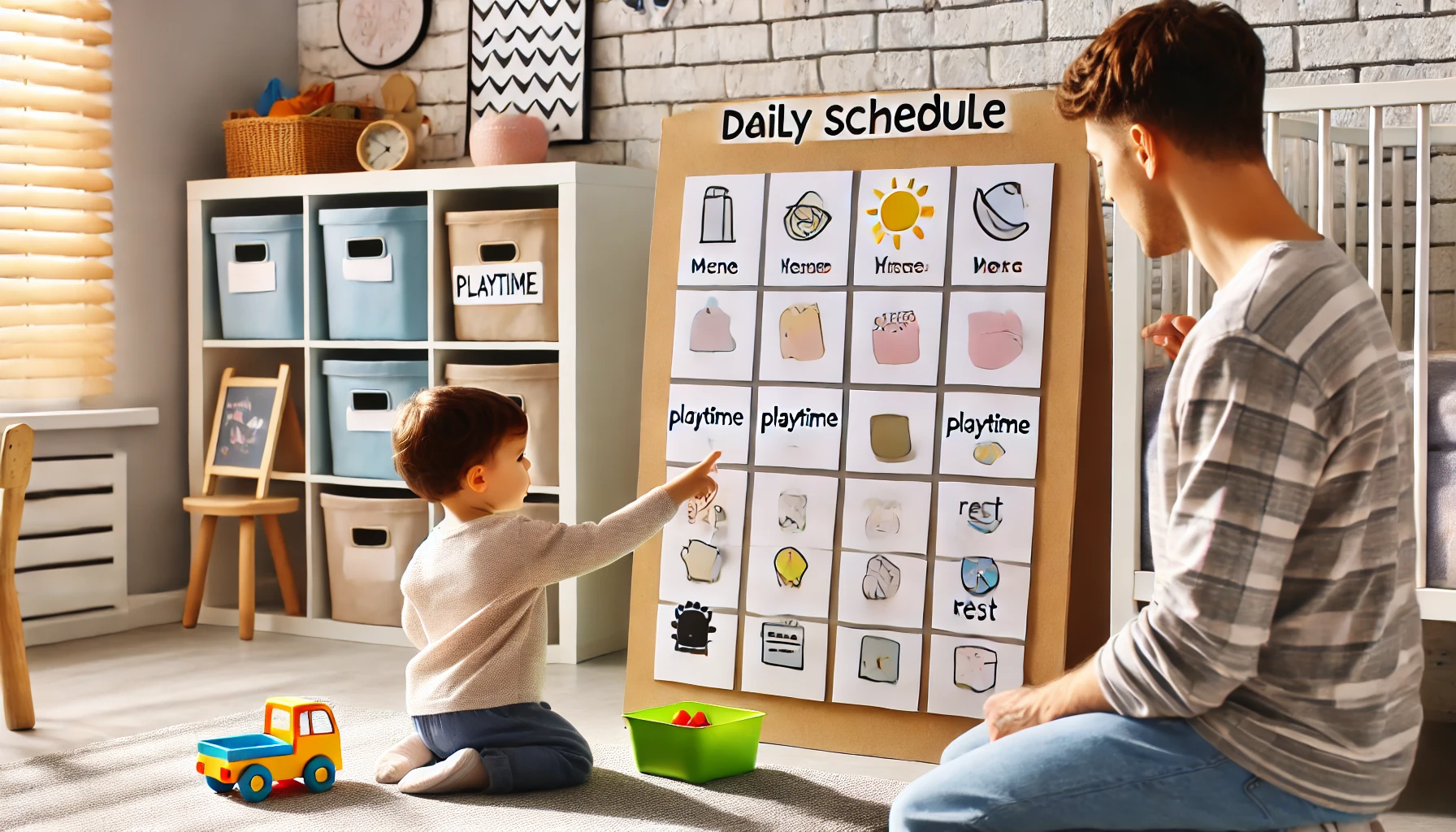How to Teach Young Children About Planning and Organization
Organization might sound like a skill for older kids or adults, but even young children benefit from learning simple ways to plan and organize their day. These skills help children feel more secure, develop independence, and better understand time and tasks. With colorful visuals, fun routines, and consistent support, kids can learn that planning is empowering—and even fun!
Why Teaching Planning and Organization Matters
- Reduces stress and confusion
- Builds independence and confidence
- Supports focus and responsibility
- Encourages time management
- Prepares kids for school and structured activities
1. Explain What Planning Means in Simple Terms
Make it age-appropriate.
Activity Idea:
- Say: “Planning means deciding what we’ll do and when we’ll do it.”
- Use relatable examples: “We eat breakfast before getting dressed.”
- Ask: “What’s something you want to plan for today?”
What Kids Learn:
- That planning gives structure.
- How to think ahead.
- That they can be involved in daily choices.
2. Use a Visual Daily Schedule
Pictures help kids understand routines.
Activity Idea:
- Create a visual chart with images of common activities: wake up, eat, play, rest.
- Let your child move cards or stickers as tasks are completed.
- Keep it simple and consistent.
What Kids Learn:
- Sequencing and time awareness.
- That tasks follow a pattern.
- Ownership of their day.
3. Teach Clean-Up Routines and Space Organization
Tidy spaces support tidy thinking.
Activity Idea:
- Label bins with pictures for toys, books, and blocks.
- Sing a clean-up song as you tidy together.
- Assign “places” for favorite items.
What Kids Learn:
- How to manage their environment.
- That organization saves time and reduces stress.
- Respect for shared spaces.
4. Break Tasks Into Simple Steps
Make goals feel manageable.
Activity Idea:
- For “getting ready,” break it into steps: brush teeth, choose clothes, put on shoes.
- Use a checklist with pictures they can check off.
- Celebrate finishing each step.
What Kids Learn:
- Task completion skills.
- Focus through small actions.
- Confidence in finishing goals.
5. Use Storybooks About Planning and Organization
Stories bring ideas to life.
Activity Idea:
- Read books like Llama Llama Time to Share or Froggy Gets Dressed.
- Discuss what the characters did to get organized.
- Create your own planning story together.
What Kids Learn:
- Relatable lessons through characters.
- Planning as a fun and useful habit.
- Emotional connection to routines.
6. Create a “Plan the Day” Moment Together
Build a shared habit.
Activity Idea:
- Each morning, look at the schedule and talk about what’s coming.
- Let your child pick one or two fun activities to “schedule” in.
- End the day by reviewing what was done.
What Kids Learn:
- Time awareness.
- How to anticipate events.
- Joy in being included in planning.
7. Use Timers and Visual Clocks
Help children understand the passage of time.
Activity Idea:
- Use sand timers or visual countdown clocks for activities like playtime or screen time.
- Say: “When the timer is done, we’ll clean up.”
- Count down together: “Three more minutes of fun!”
What Kids Learn:
- Transitions feel less abrupt.
- Patience and pacing.
- That routines have a rhythm.
8. Praise Organizational Efforts
Celebrate every small win.
Activity Idea:
- Say: “You remembered to put your shoes away—great job!”
- Use a “Planner of the Day” badge or sticker.
- Reflect: “What did we plan today that worked really well?”
What Kids Learn:
- Motivation through encouragement.
- Awareness of their role in routines.
- Pride in independence.
Final Thoughts
Teaching young children about planning and organization gives them tools for a smoother, more confident life. With colorful visuals, small steps, and loving support, they learn that structure brings freedom—not restriction. These early habits help kids feel capable, calm, and in control of their day.
